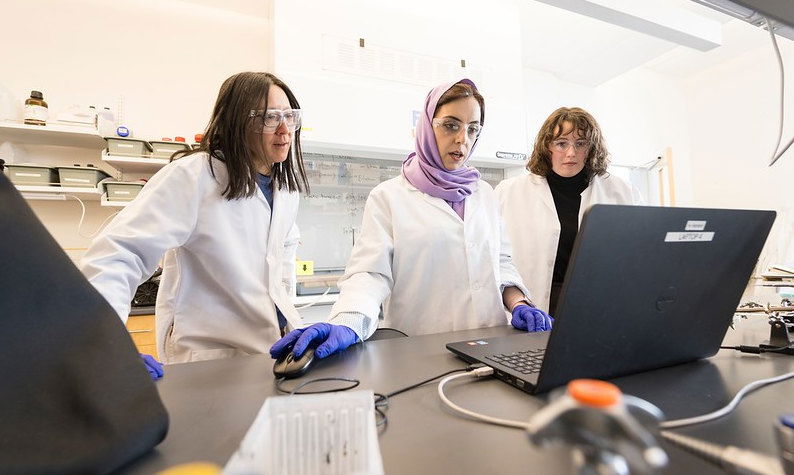OSU researchers plan to use saliva in AI-assisted personalized home monitoring, to boost epilepsy care

CORVALLIS, Ore. (KTVZ) – Researchers at Oregon State University are poised to use saliva to make a personalized-medicine breakthrough for people with epilepsy, thanks to a four-year, $1.2 million grant from the National Institutes of Health.
The OSU team had already demonstrated a sensor system, based on microfluidics, for quickly analyzing the level of anti-seizure medicine in saliva and now will extend its work to create a device, powered by artificial intelligence, that’s designed to optimize dosing.
Roughly 3.4 million people in the United States have epilepsy, including nearly half a million children, according to the Centers for Disease Control and Prevention.
Epilepsy is a neurological disorder characterized by muscle spasms, convulsions and loss of consciousness in addition to seizures. Its negative impacts to physical and mental health are numerous, including a suicide risk that’s more than 20% greater than that of the general population, according to the CDC.
Anti-epileptic drugs, or AEDs, have been available for more than a century but their optimal dose – high enough to control seizures and low enough not to create other problems – is typically within a narrow range that varies widely from patient to patient.
Above that range they can become toxic to the point of causing poor muscle control, disorientation, hallucinations and even coma. For a significant percentage of epilepsy patients, determining the right drug and the correct dose can be a long-term challenge, the researchers note.
The standard way of measuring how much of a drug is in a patient’s system is with a blood test conducted in a laboratory, but the lag – it can be as much as several days from the time blood is drawn until the results are in – greatly limits the test’s usefulness for people on AEDs.
Aiming to drastically shorten the turnaround time, Oregon State’s Stephen Ramsey, Elain Fu and Matthew Johnston looked instead to saliva.
“Saliva, which is easily and non-invasively accessed, has terrific potential for health monitoring,” said Fu, an associate professor of chemical engineering. “But saliva also presents a challenge for the electrochemical detection of the drug because saliva has a complex composition that can result in signal interference.”
That’s where artificial intelligence and machine learning come in, said Ramsey, a biomedical and computer science researcher with dual appointments in the College of Engineering and the Carlson College of Veterinary Medicine. AI will sort through the interference and help figure out the right dose on a person-by-person basis, he said.
“We aim for patients to use this device at home, and it would relay the measurements, along with patient-reported information about any recent side-effects or breakthrough seizures, wirelessly to their doctor,” Ramsey said. “The doctor would have access to an app that would show the patient’s medication levels over time, with information about when side effects and breakthrough seizures occurred. We envision that this will help identify the patient’s optimal dose.”
Johnston, the other co-principal investigator, is an associate professor of electrical engineering and computer science.